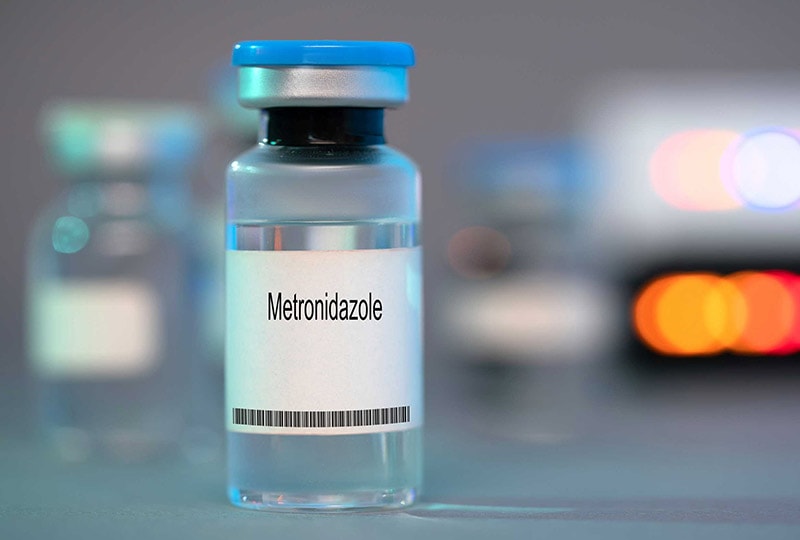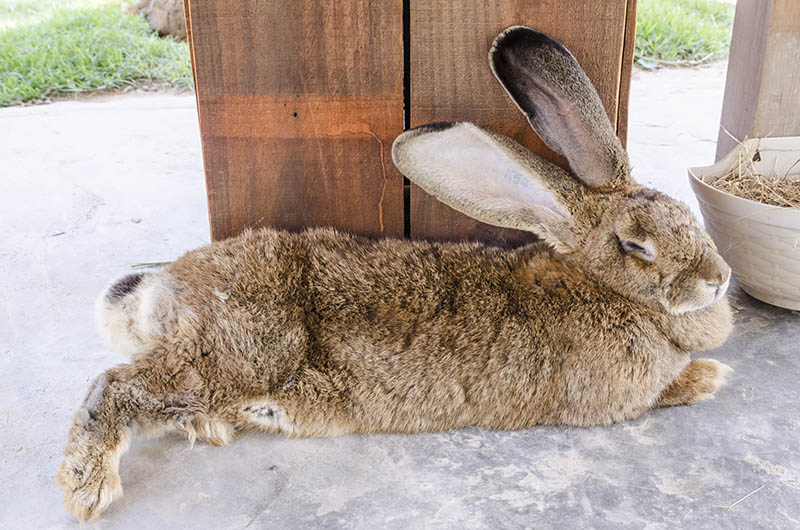Rabies in Cats: Symptoms, Causes & What To Do (Vet Answer)

Updated on
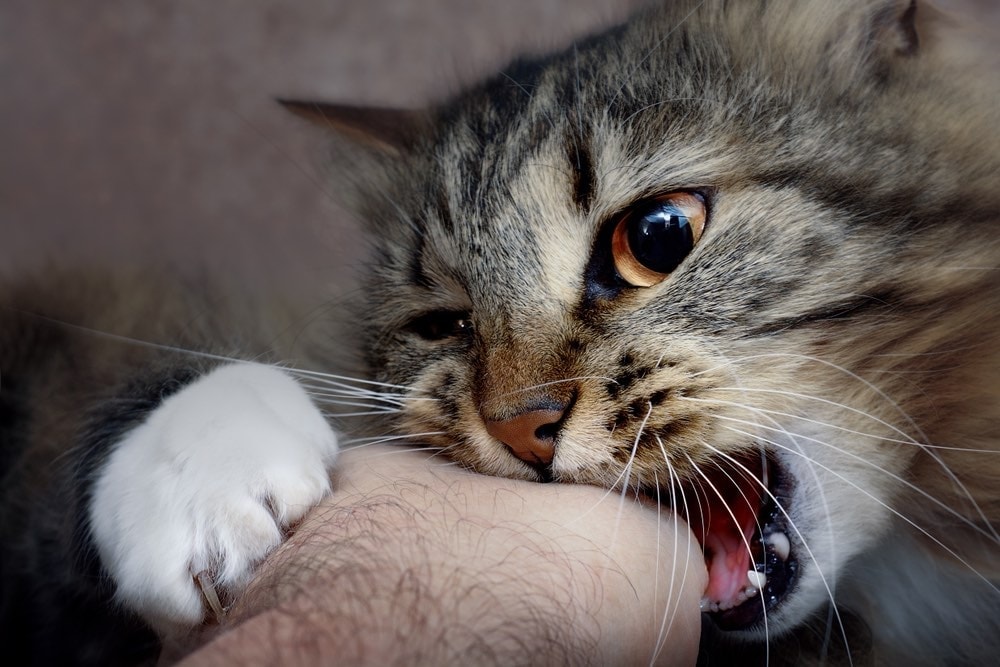
Click to Skip Ahead
Rabies is a very serious illness, which sadly still kills many humans and animals worldwide. Thankfully, the disease is much less common in the US than it was 50 years ago, but there are still usually a few human deaths each year. Around 250 cats are reported with rabies each year.
 What Is Rabies?
What Is Rabies?
“Rabies” is the name for the disease that happens when a person or animal is infected with one of the Lyssaviruses. This is a family of viruses that can infect most mammals, including cats, dogs, and humans. They include the true Rabies virus, Rabies lyssavirus, but there are other Lyssaviruses that can cause this illness, too.
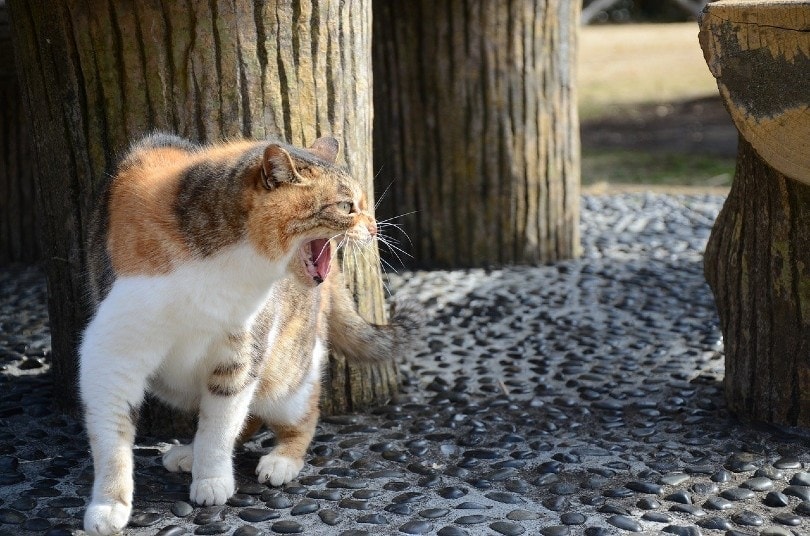
How Do Cats Get Rabies?
Cats (and humans) usually catch rabies when they are bitten by another animal who is already infected with a rabies virus. This may be a wild animal, or another pet (most commonly a dog) who has already been infected with the virus. In the US, the animals most commonly infected with rabies are raccoons, skunks, bats, and foxes. Cats usually come into contact with these outdoors.
Only around 1% of cases of rabies in the US are in pet dogs, due to the legal requirement to have them vaccinated. In other countries where dogs are not routinely vaccinated against rabies, it is much more common for them to be infected.
In rare cases, cats could catch the virus in other ways – for example, by entering a cave with many infected bats in it, where there are droplets in the air containing the virus. Breathing these in could lead to infection.
Symptoms of Rabies in Cats
Cats who are infected with rabies will not start showing symptoms straight away. There is usually an “incubation period,” which means it normally takes around two months before the symptoms start to appear. However, in some cases the incubation period may be as short as 2 weeks, or as long as several years. Some of the symptoms of rabies are non-specific and can look a lot like many other illnesses.
- Be quiet and lethargic
- Lose their appetite
- Vomit
- Have diarrhea
- Drool a lot.
Neurological Symptoms
Rabies viruses attack the brain and the nerves. This means that infected cats may show “neurological” symptoms.
- Becoming more withdrawn OR more attention-seeking
- Randomly attacking humans or other animals, unprovoked
- Randomly snapping or swiping at the air (as a result of hallucinations)
- Biting themselves, especially around the area of the bite wound that gave them rabies
- An irrational fear of water – even small amounts in a cup or bowl (“hydrophobia”).
- Having one pupil larger than the other (“anisocoria”)
- Being unable to move one or both sides of their face (“facial paralysis”)
- Being unable to move their tongue properly
- Being unable to swallow properly.
The combination of drooling more and being unable to swallow properly means that a lot of saliva will build up around the cat’s mouth, and it may fall onto their chest or legs.
Disease Progression
Infected cats may pass away more suddenly, at any stage of the disease. If this does not happen, then they will eventually become quieter and weaker, then pass into a coma, and finally pass away.
Occasionally, cats will develop the more unusual “paralytic” or “dumb” form of rabies, where they do not show any excitableness or increased aggression, but instead just become progressively slower and weaker.
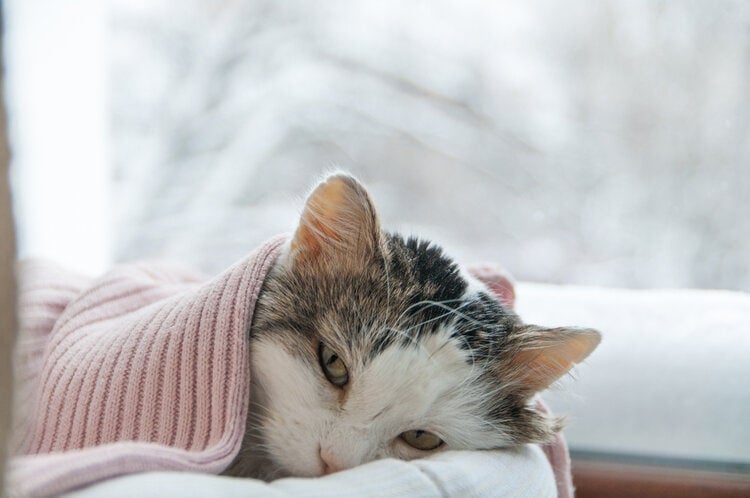
What Should I Do If I Think My Cat Has Rabies?
If you are concerned that your cat is showing symptoms of rabies or might have been in contact with another animal infected with rabies, then this is never something to ignore – you need to take action straight away.
My Cat Has Been Bitten By Another Animal
Any bite wounds on your cat should always be checked by a veterinarian, as they are often painful, and will at least need treating with antibiotics and painkillers.
If you think that the animal who bit your cat had rabies, or you are not unsure whether they did or not, then you should tell your veterinarian immediately. The CDC recommends that they should give your cat a rabies vaccination (regardless of when they last had a booster), and that you keep them at home and observe them closely.
Unfortunately, if your cat has never previously been vaccinated, then sadly giving a vaccination after they have been bitten will not reliably protect them from infection. In these cases, the CDC recommends that they should either be euthanized, or vaccinated and placed into strict quarantine for 4 months, to protect humans and other animals.

My Cat Is Showing Symptoms Of Rabies
If your cat is showing signs of rabies, then you should take them to see a veterinarian immediately. As we discussed earlier, many of the symptoms of rabies are non-specific, and other things can cause this kind of illness. Your veterinarian will need to examine your cat, and run some tests, to determine if there is something else going on.
If your cat has become aggressive, consult your veterinarian for the safest way to transport them to the clinic. Remember, cats can pass rabies to humans, so it is extremely important to avoid being bitten.
My Cat Has Bitten Me or Someone Else
First, make sure that the person who has been bitten seeks immediate medical attention. Cats have a lot of bacteria in their mouths, so their bites are almost always infected and can lead to sepsis if untreated.
The CDC recommends that any healthy cat who bites a human should be confined for 10 days and closely monitored for any symptoms of rabies. They should not be given a rabies vaccination, as any side effects might be mistaken for symptoms of the disease itself. Your veterinarian may need to speak to a local public health official to arrange this.
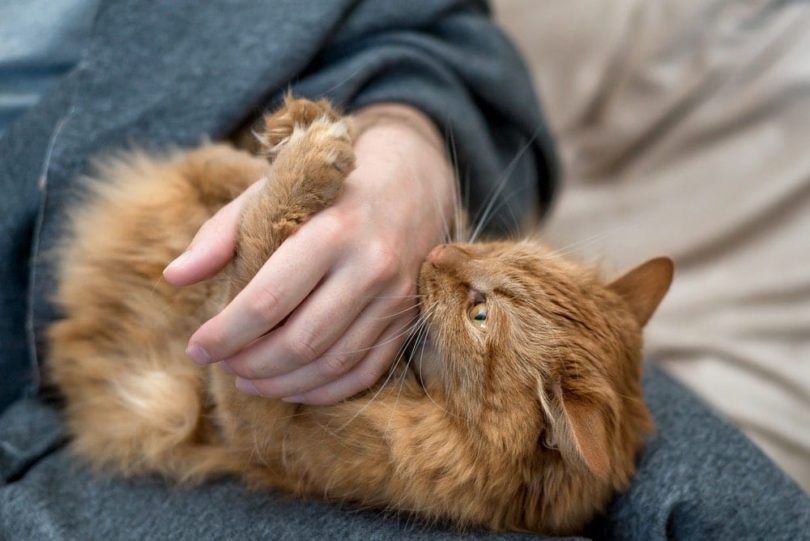
Treatment of Rabies in Cats
If a cat is bitten by another animal who is known or suspected to have rabies, and they are up to date with their rabies vaccination, then they should be given a booster immediately. Unfortunately, this will not always protect them against the disease, but it will give their immune system the best possible chance of fighting it off.
Sadly, there is no effective treatment for rabies in cats, or indeed in any other species. Once the symptoms have appeared, it is always fatal.
Prevention of Rabies in Cats
There are several different things you can do to help reduce your cat’s risk of catching rabies.
Vaccination
There are now several different brands of rabies vaccine available for cats. All of them are very effective at reducing a cat’s risk of becoming sick, though sadly no vaccination is 100% effective.
In the US, there are different rules in each state regarding rabies vaccinations in cats, so you should be careful to follow your local laws. Check out Rabies Aware to see what the rules are where you live.
Internationally, there are again local laws for vaccinations in many countries. As a minimum, the World Small Animal Veterinary Association recommends that cats receive a vaccination once they are over 12 weeks of age, and then an initial booster one year later. Further boosters will either be needed every year or every three years, depending on the type of vaccine used.
Some countries (mostly island nations such as Great Britain, Ireland, Australia, and New Zealand) are free of the most common rabies viruses. Pets there may not require routine vaccinations unless they are traveling abroad.
Keeping up to date on vaccines is an important part of pet care that can help you avoid costly health problems. Another way to manage pet costs is to invest in a pet insurance plan like the balanced options from Lemonade. These customizable plans can offer coverage for a range of healthcare costs.
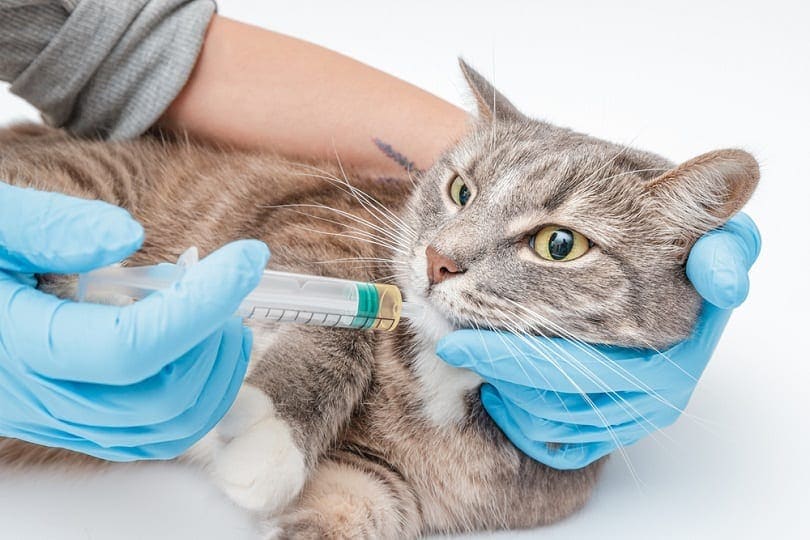
Avoid Contact with Wildlife
Cats must come into close contact with an infected animal in order to catch rabies, so keeping cats away from wildlife will significantly reduce their risk of catching these viruses. It will also avoid hazards such as traffic, or injuries from other local cats.
This can be done in several different ways:
Indoor-only cats
Cats can live exclusively indoors, providing they are given everything they need within your house or flat. The International Society of Feline Medicine has created the Environmental Needs Guidelines to help you understand what your cat needs to get out of their space.
Indoor-only living will remove all contact with wild animals, and therefore radically reduce your cat’s risk of developing rabies. However, it is still possible that they could escape and come into contact with infected animals, so it is important to keep up with their vaccinations in line with your state’s laws.
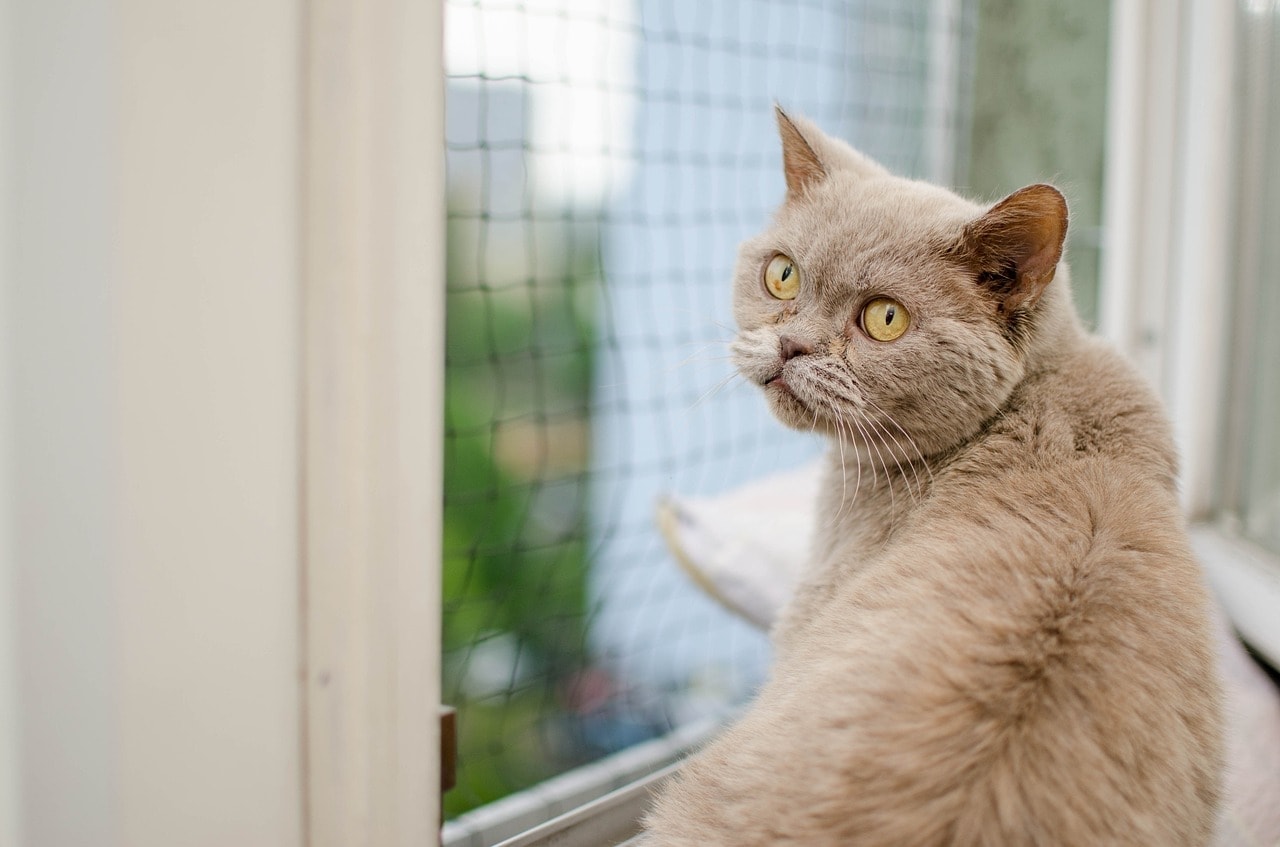
Enclosed Outdoor Space
There are several different ways to give your cat access to an outdoor space while reducing the risk of them encountering wildlife.
Cat enclosures or “catios” are becoming increasingly popular. These are structures attached to the side of your house (or over a balcony) that are enclosed with mesh or wire on all sides (including the top) to protect cats and prevent them from escaping. If you provide a cat flap, then your cat can have unrestricted access to a safe outdoor area.
You can also get fencing for your backyard that is designed to keep your cats in, and keep any other cats or wildlife out. This is usually taller than normal fencing, and may have an angled piece at the top to prevent cats from climbing onto the top of the fence and then jumping over.
All these kinds of systems must be carefully maintained to make sure there are no weak spots or holes where cats might escape, but they can be very effective in providing a safe space. Theoretically, cats could still come into contact with wildlife through the mesh or small gaps in the fence, but it still significantly reduces their risk of harm.
Supervised Outdoor Activity
Cat harnesses and leashes have become quite popular in the last few years as a way of taking cats for a walk and allowing them to experience the outdoors under supervision. These must be carefully fitted to make sure a cat cannot wriggle loose, and can take some time for them to get used to. It is best to start using them when cats are young, but make sure that they have had all their vaccinations before allowing them to go for a walk.
Leash walking provides a way for cats to be outdoors and explore while reducing the risk of contact with other animals. However, it is still possible for them to encounter wildlife, so keep a close eye on them at all times.
When considering all these options, it is important to remember that each cat is different. While some will live comfortably with these restrictions, others may find it more difficult or stressful. If you are struggling to find the right balance for your cat, speak to a veterinarian or a feline behavioral specialist for further advice..
Final Thoughts
Rabies is a very unpleasant disease that can affect all mammals, including both cats and humans. Sadly, once symptoms appear, rabies is always fatal, so it is important to take steps to protect our cats from becoming infected. Regular vaccinations will train your cat’s immune system to fight the virus more effectively, but no vaccine can provide protection that is 100% effective. Where possible, it is best to try and avoid your cat coming into contact with other animals (mostly foxes, raccoons, skunks, and bats) to prevent them from becoming infected.
See also:
- 10 Best Automatic Cat Feeders for Multiple Cats
- 8 Cat Neurological Disorders to Be Aware of (Vet Answer)
Featured Image Credit: Nau Nau, Shutterstock

 What Is Rabies?
What Is Rabies?